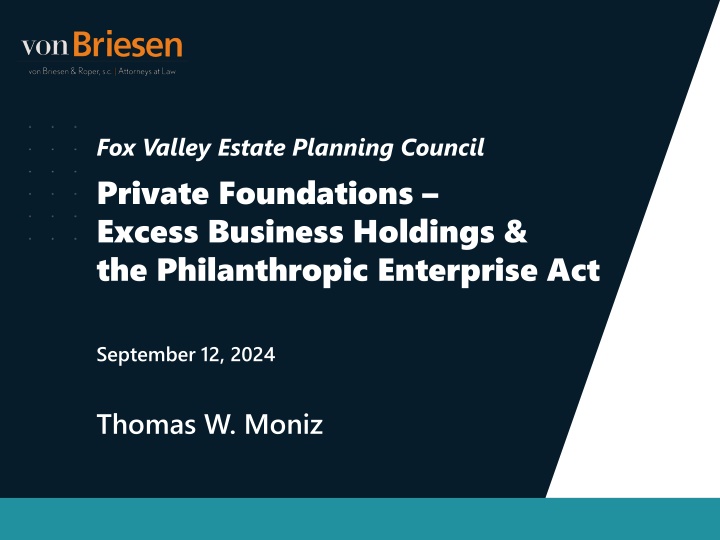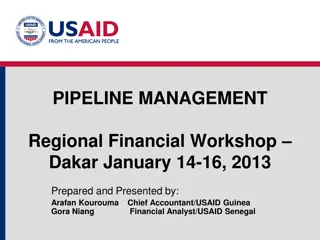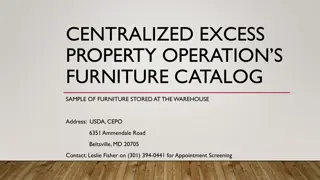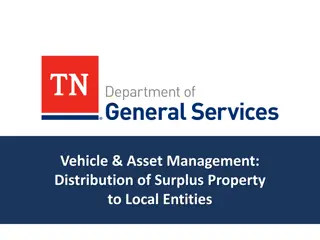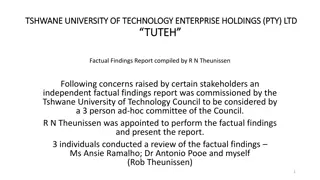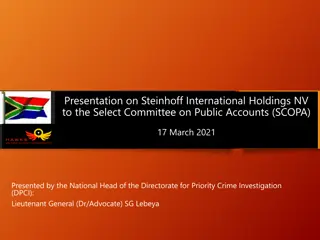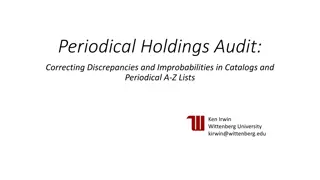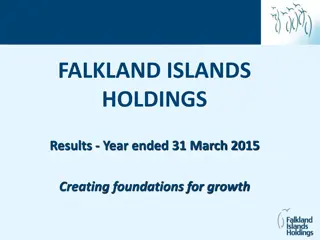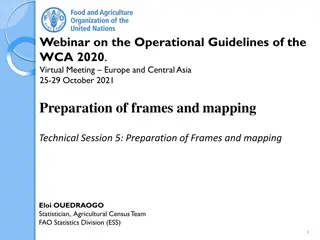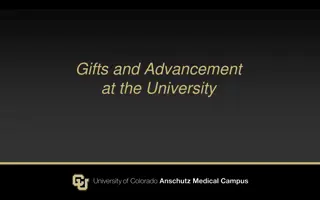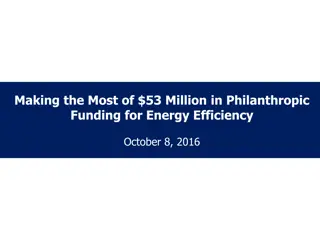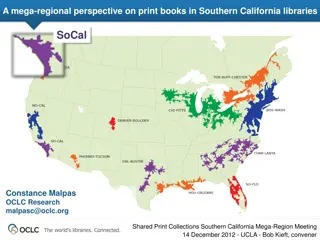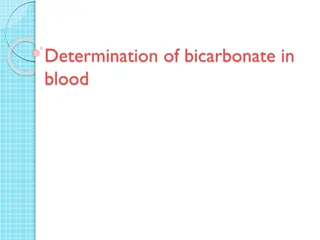Excess Business Holdings & Philanthropic Regulations
Explore the rules and implications of excess business holdings for private foundations, focusing on IRC 4943 regulations, tax implications, limits, and tests. Learn how these rules aim to prevent distractions from charitable work and unfair competition.
Download Presentation

Please find below an Image/Link to download the presentation.
The content on the website is provided AS IS for your information and personal use only. It may not be sold, licensed, or shared on other websites without obtaining consent from the author.If you encounter any issues during the download, it is possible that the publisher has removed the file from their server.
You are allowed to download the files provided on this website for personal or commercial use, subject to the condition that they are used lawfully. All files are the property of their respective owners.
The content on the website is provided AS IS for your information and personal use only. It may not be sold, licensed, or shared on other websites without obtaining consent from the author.
E N D
Presentation Transcript
Fox Valley Estate Planning Council Private Foundations Excess Business Holdings & the Philanthropic Enterprise Act September 12, 2024 Thomas W. Moniz
Tom is Chair of von Briesens Nonprofit and Tax Exemption Section. He focuses his practice on tax exemption, nonprofit formation and governance, and Benefit Corporations. He also has a significant trust and estate planning and administration practice. Tom s clients view him as a legacy advisor using a personal, connected approach to work with clients and their families related to their unique business needs, personal needs and assets in conjunction with their estate plans. Tom especially enjoys working collaboratively and strategically with clients other trusted advisors an approach that he believes adds value now and for successive generations. Tom is active with several nonprofits including Boys & Girls Club of the Tri-County Area, First We Live Foundation, Inc., Envision Greater Fond du Lac, and Oshkosh Area Community Foundation. Tom Moniz| thomas.moniz@vonbriesen.com| 920.232.4856 2
Agenda Excess Business Holdings Philanthropic Enterprise Act oHistory oTest 3 factors Planning Considerations Case Studies 3 3
History The excess business holdings rules were designed in part to 1) prevent foundations from running businesses to benefit family members, rather than charity, 2) keep foundation managers focused on charitable goals, rather than business operation, and 3) avoid foundation-owned enterprises from holding profit and making minimal distributions to the benefiting foundation. While the excess business holding rules addressed these concerns, the rules also effectively prohibited private foundations from owning substantial interests in business entities. 4 4
Excess Business Holdings IRC 4943 Excess Business Holdings Rules Limits a private foundation s ownership of business holdings. Private foundation with excess business holdings is subject to excise tax on its excess business holdings. Purpose of Excess Business Holdings Rules Prevent private foundations from being distracted from charitable work. Prevent unfair competition for for-profit businesses. Prevent profits from escaping tax. 5 5
Excess Business Holdings Test: The combined holdings of a private foundation and its disqualified persons are limited to 20% of the voting stock of a corporation or 20% of the beneficial interest of a partnership, joint venture, or other unincorporated enterprise. A private foundation is generally not counted against the 20% limitation if disqualified persons do not own more than 20% of the voting stock. Disqualified persons substantial contributors, foundation managers, 20% owners, family members/spouses of the above, 35% owners, related private foundation, and certain government officials. 6 6
Excess Business Holdings Penalty: Initial Tax: 10% of the value of the excess holdings Additional Tax: 200% of the value of the excess holdings 7 7
Excess Business Holdings Exceptions: De Minimus Exception not more than 2% Third-Party Control Exception increase to 35% Newman s Own Exception (the Philanthropic Enterprise Act) 8 8
Philanthropic Enterprise Act Adopted: February 9, 2018 by President Trump as part of the Bipartisan Budget Act of 2018 Purpose: to save the Newman s Own Foundation 9 9
Philanthropic Enterprise Act Test: Exclusive Ownership Requirement All Profits to Charity Distribution Requirement Independent Operation Requirement 10 10
Philanthropic Enterprise Act Exclusive Ownership Requirement: (2) Ownership. The requirements of this paragraph are met if (A) 100 percent of the voting stock in the business enterprise is held by the private foundation at all times during the taxable year, and (B) all the private foundation s ownership interests in the business enterprise were acquired by means other than by purchase. 11 11
Philanthropic Enterprise Act All Profits to Charity Distribution Requirement: (3) All profits to charity. (A) In general. The requirements of this paragraph are met if the business enterprise, not later than 120 days after the close of the taxable year, distributes an amount equal to its net operating income for such taxable year to the private foundation. 12 12
Philanthropic Enterprise Act (B) Net operating income. For purposes of this paragraph, the net operating income of any business enterprise for any taxable year is an amount equal to the gross income of the business enterprise for the taxable year, reduced by the sum of i. the deductions allowed by chapter 1 for the taxable year which are directly connected with the production of such income, ii. the tax imposed by chapter 1 on the business enterprise for the taxable year, and iii. an amount for a reasonable reserve for working capital and other business needs of the business enterprise. 13 13
Philanthropic Enterprise Act Independent Operation Requirement: (4) Independent operation. The requirements of this paragraph are met if, at all times during the taxable year (A) no substantial contributor (as defined in section 4958(c)(3)(C)) to the private foundation or family member (as determined under section 4958(f)(4)) of such a contributor is a director, officer, trustee, manager, employee, or contractor of the business enterprise (or an individual having powers or responsibilities similar to any of the foregoing), 14 14
Philanthropic Enterprise Act Independent Operation Requirement (continued): (B) at least a majority of the board of directors of the private foundation are persons who are not (i) directors or officers of the business enterprise, or (ii) family members (as so determined) of a substantial contributor (as so defined) to the private foundation, and (C) there is no loan outstanding from the business enterprise to a substantial contributor (as so defined) to the private foundation or to any family member of such a contributor (as so determined). 15 15
Philanthropic Enterprise Act Application: (5) Certain deemed private foundations excluded. This subsection shall not apply to: (A) any fund or organization treated as a private foundation for purposes of this section by reason of subsection (e) or (f), (B) any trust described in section 4947(a)(1) (relating to charitable trusts), and (C) any trust described in section 4947(a)(2) (relating to split-interest trusts). 16 16
Planning Opportunities for Business Owners Ongoing charitable gift with business profits Considerations Do you own the entire voting interest of the business? Are you ready to give up control/employment? Are you ready to give up profits? Do you have individuals who could serve as directors of the foundation and the business? 17 17
Planning Opportunities for Business Owners Considerations (continued) Are there arrangements between the business and you, your family and other disqualified persons that violate the independent operation requirement (such as loans)? Will you need a change in tax status or business structure (such as S corp classification)? 18 18
Considerations for Private Foundations Structure of foundation board Beware violating the Philanthropic Enterprise Act and falling back under the excess business holdings rules Need sufficient liquidity to make 5% annual distribution Can certain passive-income producing activities be carried on more efficiently by the foundation itself (rather than retaining such activities in the business? 19 19
Case Studies Newman s Own Foundation Other Examples 20 20
Other Alternatives Gift business to public charity o Option of using a single member limited liability company Retain voting stock and gift non-voting stock to private foundation ESOPs 21 21
Questions? Questions? 22 22
Sign up to receive von Briesen s Law Updates by visiting: vonbriesen.com/email-sign- up 23 23
Thank you! Tom Moniz 920.232.4856 thomas.moniz@vonbriesen.com 24
